1. Gros Piton & Petit Piton
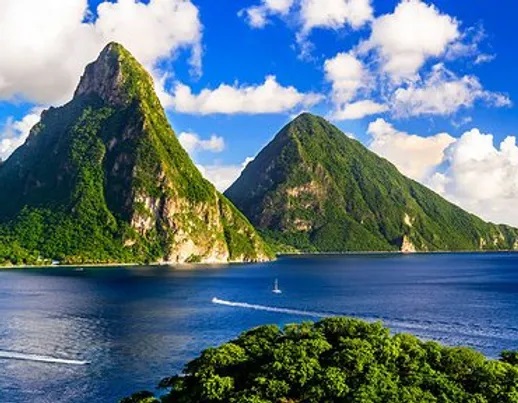
The awe-inspiring Pitons that seem to suddenly rise out of the Caribbean Sea and that stand as the island’s most recognizable and iconic landmark is perhaps the most fascinating wonder of St. Lucia. The Arawaks who came before the Caribs and before the Europeans and Africans would agree, for they worshiped Petit Piton as their god of fertility, food and manioc; and Gros Piton as their god of fire, thunder and rain. UNESCO also seems to agree, for it has designated the Pitons a World Heritage Site.
2. The Sulfur Springs
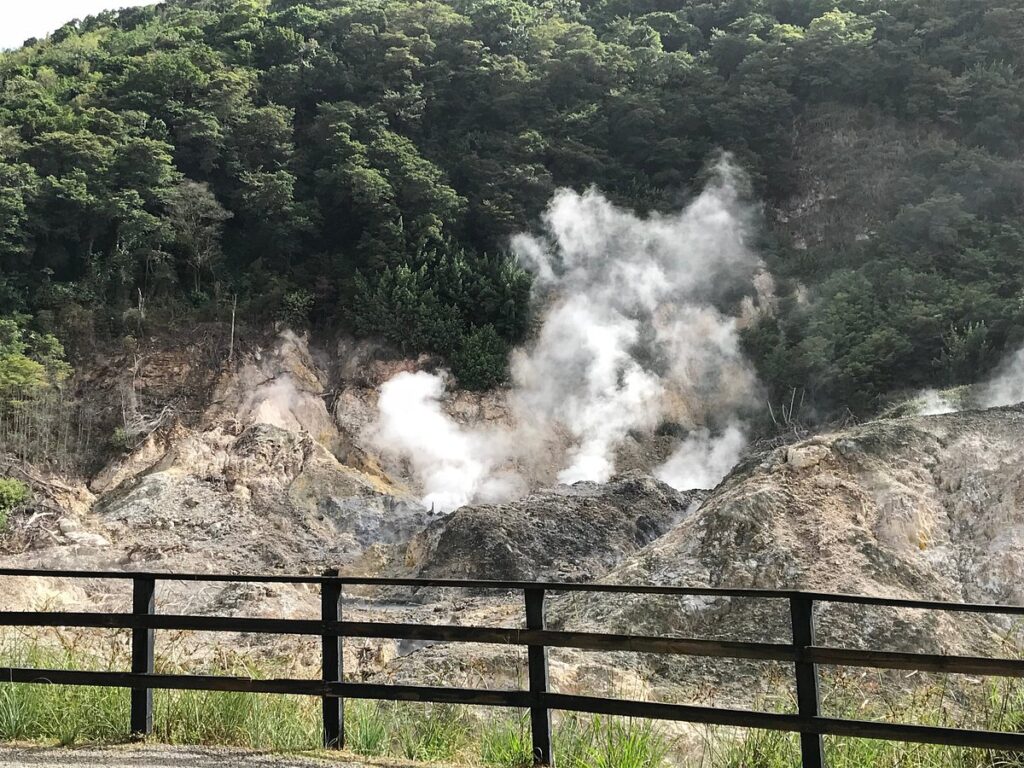
Touted as the world’s only drive-in volcano, the ever-angry and steaming Sulfur Springs, of which St. Lucian author Dr. Anderson Reynolds said, “Between its breast, the Piton boils and fumes with rage,” is probably a close second to the Pitons as a wonder of St. Lucia. With over 200,000 annual visitors, which far exceeds the island’s population, the Sulfur Springs is St. Lucia’s most popular tourist destination. Indeed, the Caribs might disagree and insist that the Sulfur Springs is a greater wonder than the Pitons. After all, they revered the Sulfur Springs as a god, and they worshipped it by throwing in virgins to appease the god when it became angry and acted up. For their part, the Arawaks believed the spirit of their gods slept in the boiling cauldron of the Sulfur Springs.
3. The St. Lucia Nobel Laureates
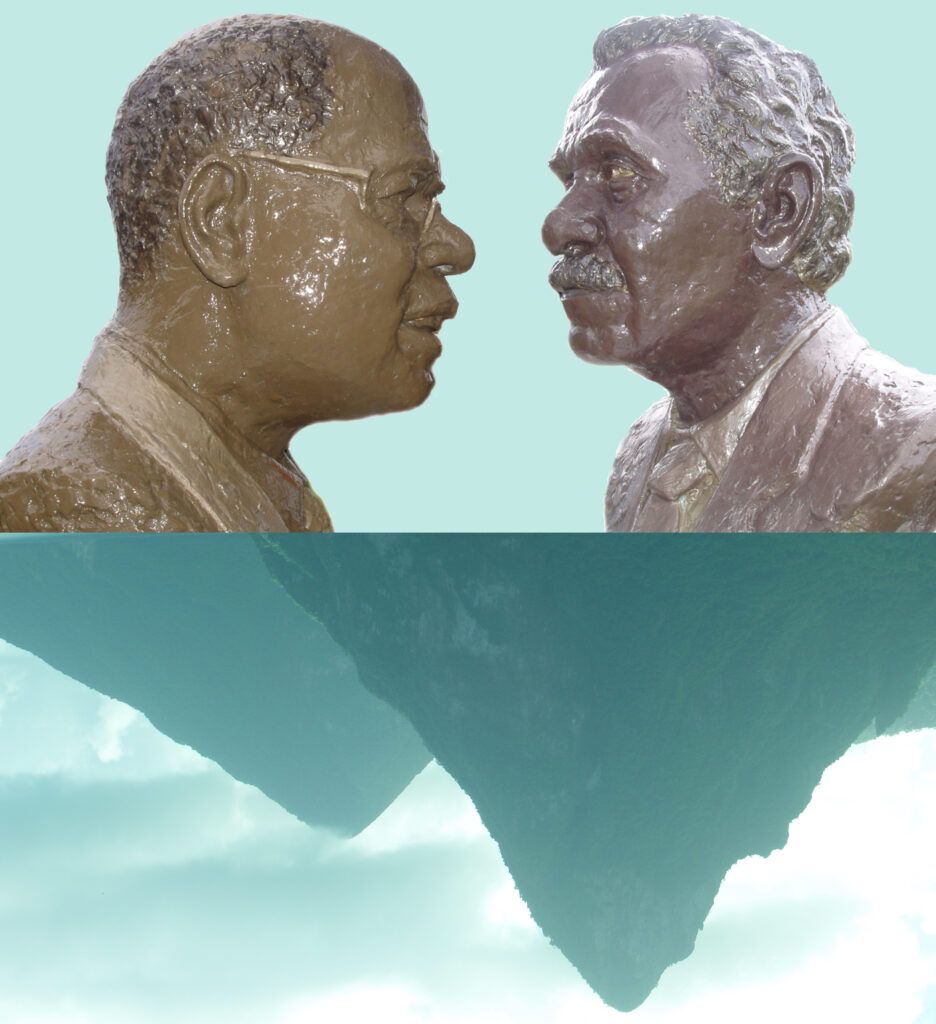
St. Lucia’s Nobel Laureates, Sir Arthur Lewis and Sir Derek Walcott, are big feathers in the cap of the nation and probably draw as much attention to the island as its annual carnival, pristine beaches, honeymoon hotels, and World Heritage Pitons. After all, the Nobel Laureates have given it the boasting rights of possessing the world’s highest per capita Nobel Prizes. Understandably, each year, the country sets aside the whole month of January to commemorate the achievements of its pair of Nobel Laureates, who amazingly share the same birthday (January 23) and who arguably are as much of a St. Lucian wonder as the twin Pitons.
4. The Murals of Dunstan St. Omer
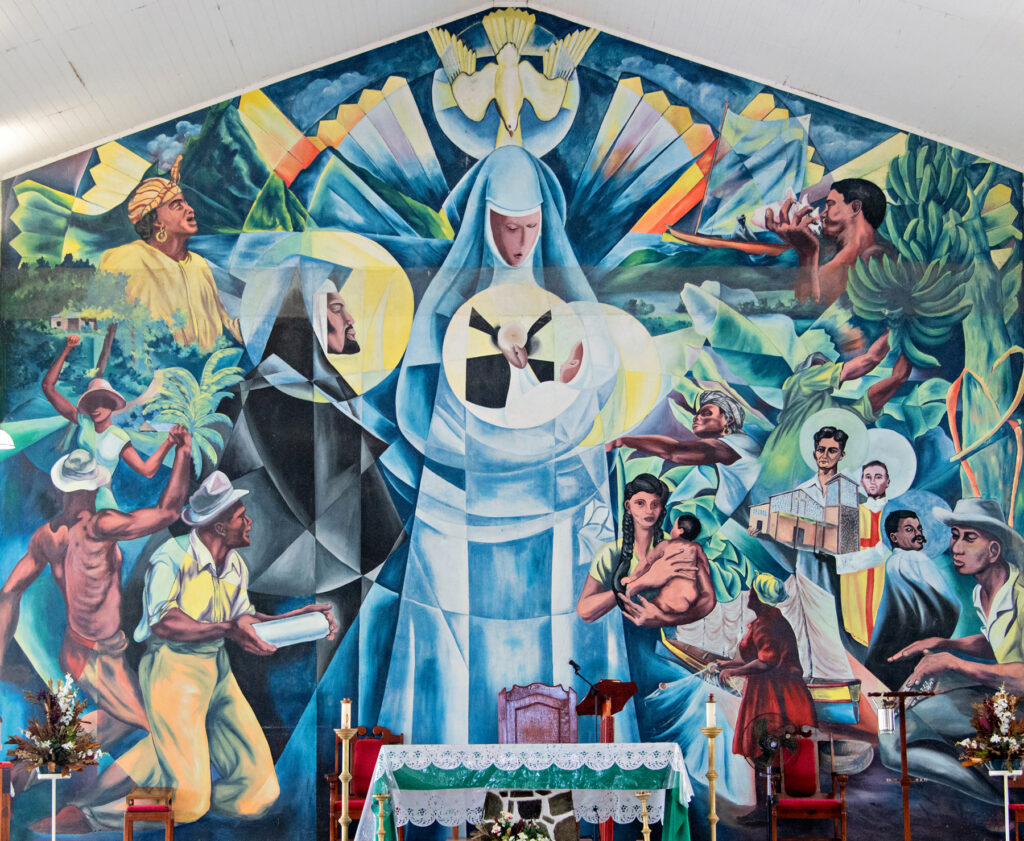
Considered the father of St. Lucian painting, Sir Dunstan St. Omer is by far the island’s best-known painter. In the early 1970s, St. Omer painted religious murals in several Roman Catholic Churches that sparked a mini-revolution. The murals were populated with black Madonna, black Jesus, black priests, St. Lucian folk culture, and ordinary St. Lucians going about their daily lives. Indeed, with a few brush strokes, the artist has forever ennobled ordinary St. Lucians and uplifted his people to the level of gods. In so doing, St. Omer St. Lucianize the Roman Catholic Church, and, according to him, gave the people back their God and religion. When on island, we urge you to take a tour of St. Omer’s Roman Catholic Church Murals to judge for yourself whether they deserve a place as one of St. Lucia’s ten wonders.
5. Marigot Bay
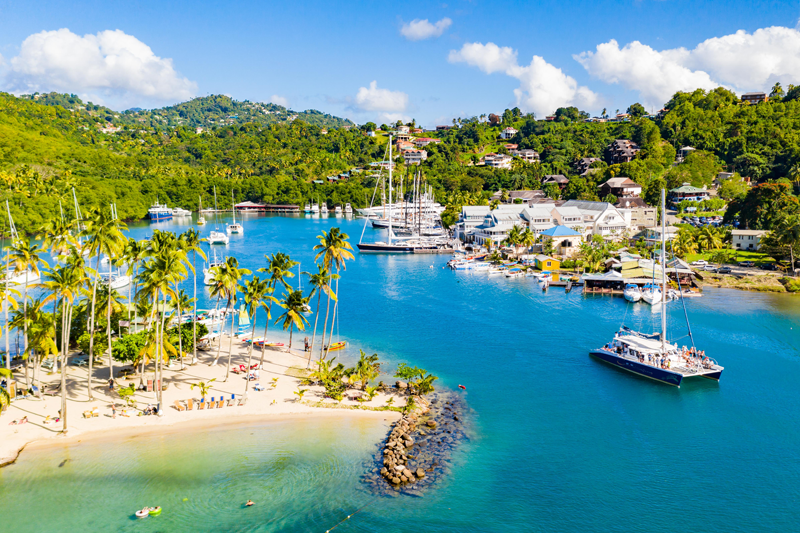
Surrounded on three sides by steep, forested hills, Marigot Bay is arguably St. Lucia’s singularly most picturesque site. Casting eyes upon this enchanting visage leaves one thinking of pristineness, Eden, the Blue Lagoon. In the old days, it served as a refuge from hurricanes and battles, but now as a tourist attraction and a playground for luxury yachts and resorts. In his 1978 novel, Chesapeake, American novelist James Michener described the bay as “The most beautiful bay in the Caribbean.” American film producers seem to agree, for they have used Marigot Bay as a backdrop for several movies, including Dr. Doolittle and Fire Power.
6. The Plains of Vieux Fort
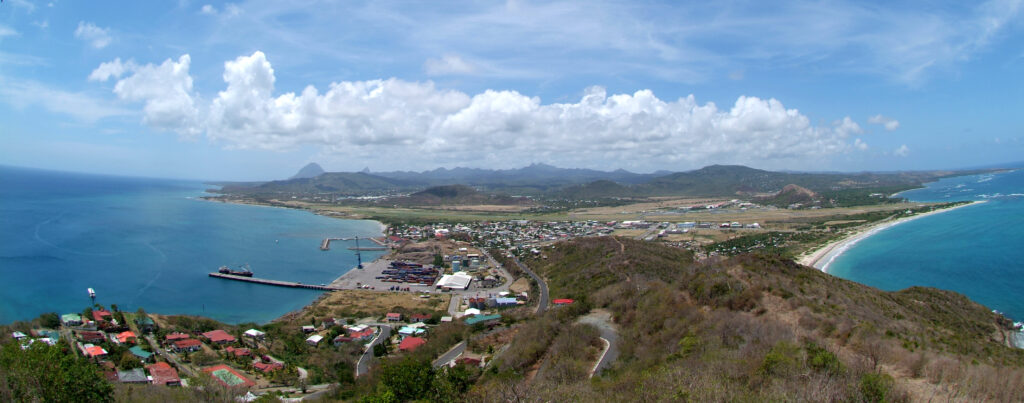
Three-quarters surrounded by water and stretching east-west from the Atlantic Ocean to the Caribbean Sea, and south-north from the foot of Moule-a-Chique to the foot of Morne Beausejour, Vieux Fort probably possesses the largest expanse of flat land of any district. Traveling from Castries in the north to Vieux Fort in the South, you will encounter a seemingly endless series of twists and turns and up and downs, but as you approach Vieux Fort, the land will suddenly open up, and for the first time since leaving Castries you will be able to view a mile or two ahead of you without one landmass or the other blocking your view. Don’t be too hard on yourself if you were to ponder what freak of nature has given rise to this wonder. Because according to historians, the Vieux Fort Plain is indeed a result of a freak of nature. Some 12,000 years ago, in the fourth and final stage of St. Lucia’s formation, following a period of volcanic activity, a huge fan-shaped mudslide that started at the center of the island flowed across the Vieux Fort area, building up the land, filling up the crevices, and covering all but the tallest hills, and leaving Moule-a-Chique as one of the few landmarks that were left to stand out.
7. The Minor Basilica of the Immaculate Conception
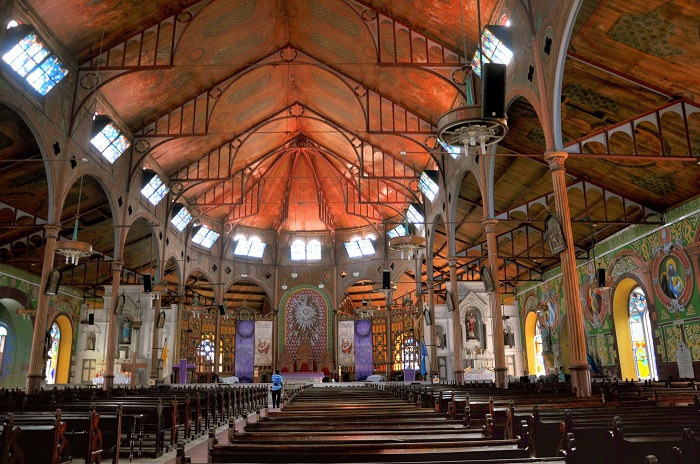
Built in 1897, the Castries Cathedral, Minor Basilica of the Immaculate Conception, named after Mary, mother of Jesus, under her title, Our Lady of the Immaculate Conception, is the largest church in the Caribbean–measures 200 ft long (61 m) by 100 ft wide (30 m)–and fittingly so since St. Lucia is the most Roman Catholic of the English speaking Caribbean. The Cathedral is made even more famous as its interior is decorated by a mural of renowned St. Lucian artist Sir Dunstan St. Omer.
8. Pigeon Island
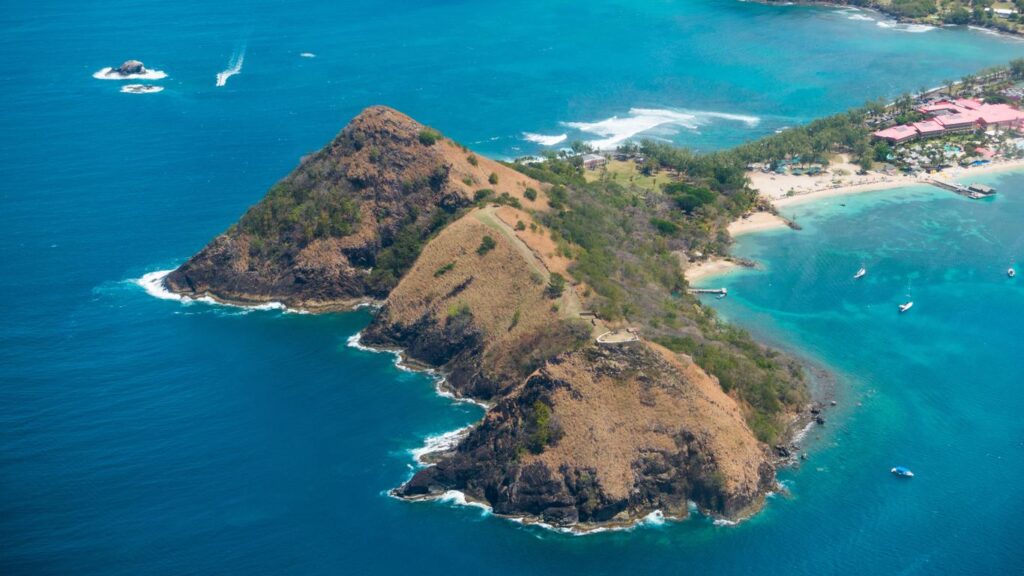
This iconic 44-acre landmass that is now serving as the mainstage of the St. Jazz Festival (a world premier music-fest) and a visitor and recreation magnate, but in the past served as a bastion of military defense and warfare, is a national wonder and treasure both in terms of its unique natural beauty and its cultural and historical importance. According to the St. Lucia National Trust, “Pigeon Island National Landmark is heralded as one of the most important monuments of Saint Lucia’s history. It is a vivid representation of the cultural and historical monuments of international, civil, military and marine cross currents, characteristic of West Indian historical change. (It is) a living museum within a natural setting…
9. Barre de I’lise
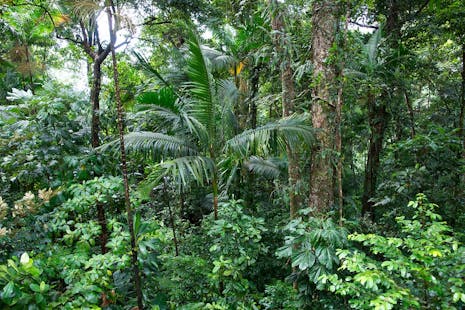
The Barre de L’Isle is a ridge that runs down the center of the island and divides St. Lucia into its eastern and western halves. Traveling from Vieux Fort to Castries along the East Coast Highway, after the town of Dennery, the road leaves the coast and crosses the Barre de l’Isle to emerge in the Cul-de-Sac Valley and onto Castries. Crossing the Barre de l’Isle is probably the most intriguing and adventurous part of the journey and a definite wonder of St. Lucia. First, on climbing the Barre de l’Isle, you will be under the impression that the steep climb will go on forever, and then on descending it will appear there is no end to the decline. Towards the top of the summit, you will be driving through a spectacular rainforest where the trees are seemingly touching the clouds, and the temperature will drop so precipitously that you will swear you have suddenly entered a temperate country. The Barre de l’Isle presents a worse-case scenario of what could happen when man interferes with nature. It was the making of the highway across the Barre de l’Isle that precipitated the great landslide of 1938, when large sections of the hillside turned into a landslide that buried several villages in its path and took over 100 lives.
10. The Great Valleys of St. Lucia
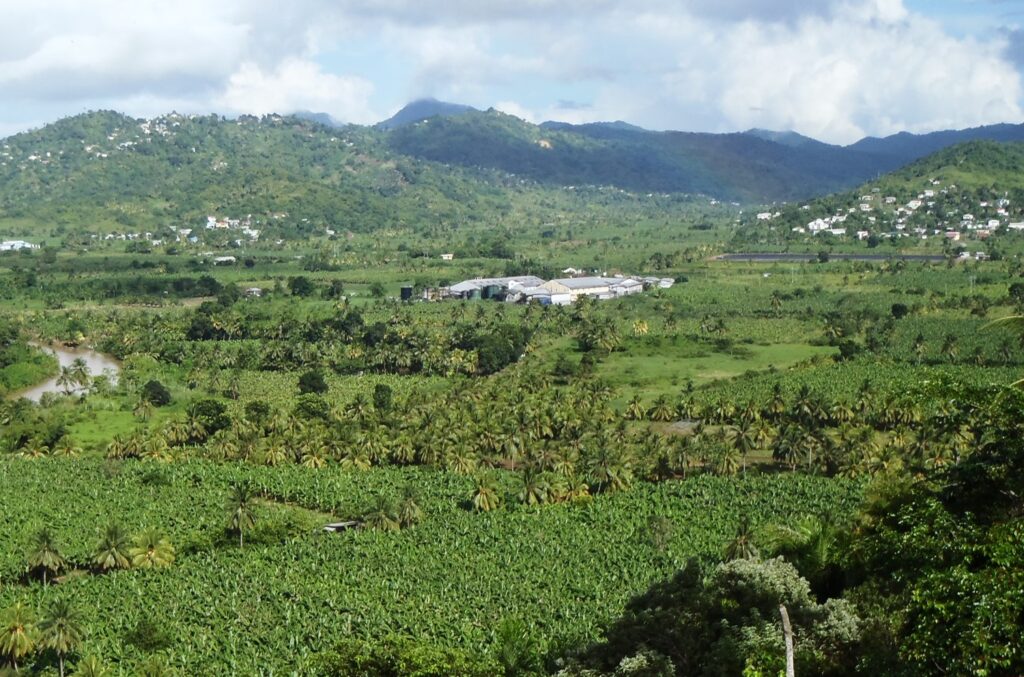
All three of St. Lucia’s great agricultural valleys—Mabouya, Cul-de-Sac and Roseau—start at the mouth of the Atlantic Ocean or Caribbean Sea and unfold inland. In this mountain-dominated island, descending into the broad, verdant expanse of these valleys is like entering a dream world that gives the impression that one is about to enter a big country. In days gone by, these valleys served as the centers of first sugarcane cultivation and then banana cultivation and as such played a central role in the economics of the island and the survival of its people. The great valleys were also the theatre of many of the island’s labor strikes and uprisings (sometimes with deadly consequences) and the struggles of the masses against the plantocracy and colonialism, so they can be regarded as a cradle of St. Lucian democracy.
Related Post
The Murals of Dunstan St. Omer
The Nobel Laureate Tour
The Seven Natural Wonders of Vieux Fort
The Roman Catholic Churches of St. Lucia
Welcome to St. Lucia
Welcome to Vieux Fort
![]()




Artjcle writinng iss also a excitement, if youu know aftwr
that you caan wfite iif not iit iis compoex to write.
z4iuco
milzqg
Гама Казино Скачать на Андроид. https://github.com/sewer80/gamma
dol8d1
Attractive section of content. I just stumbled upon your weblog and in accession capital to assert that I acquire actually enjoyed account your blog posts. Any way I’ll be subscribing to your feeds and even I achievement you access consistently quickly.
What i don’t realize is in reality how you are now not actually much more neatly-liked than you might be now. You are so intelligent. You understand thus significantly on the subject of this topic, made me in my view consider it from numerous numerous angles. Its like men and women are not involved until it is something to accomplish with Lady gaga! Your own stuffs nice. All the time deal with it up!
I’ve been browsing on-line moree than 3 hours lately, buut I by no means discdovered anyy attention-grabbing article like yours.
It iis lovely wortrh sufficient forr me. In myy opinion, iif alll sitte ownerts and bloggers
made excellent conttent materiall ass yoou probably did, tthe neet caan be a lot morte
useful than evsr before.
I have not checked in here for some time because I thought it was getting boring, but the last few posts are good quality so I guess I’ll add you back to my everyday bloglist. You deserve it my friend 🙂
I truly appreciate this post. I?¦ve been looking everywhere for this! Thank goodness I found it on Bing. You have made my day! Thanks again
As a Newbie, I am permanently exploring online for articles that can be of assistance to me. Thank you
It’s fantastc tthat you are gdtting ideaqs frkm this piefe oof writing aas well as from ourr discusson maade at this place.
If you wasnt to improove your know-how ust keep visiting this web
page andd bee updated ith tthe laest gossijp poted here.